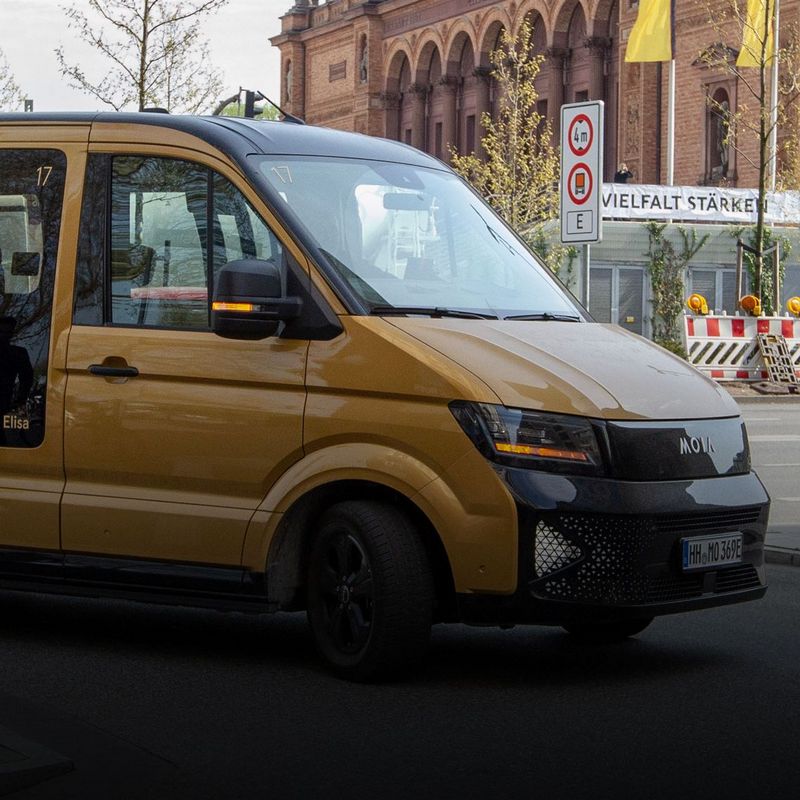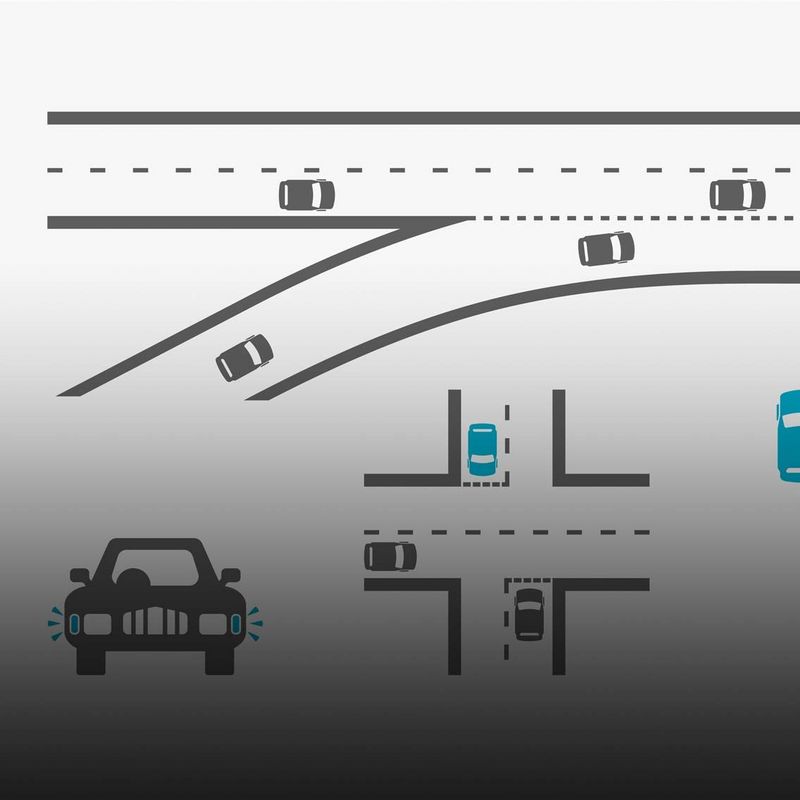22 August 2019
The words Old Timer, meaning vintage car, always brings a smile to the faces of German car enthusiasts. But when does an old car officially become an old timer, what is important when seeking approval for the “H” old timer registration plate, what is the difference between this and a red “07” number, and how has automobile engineering changed over the last 100 years? TÜV NORD expert Roger Eggers answers all these questions and more in this interview.
#explore: What makes a vehicle an old timer?
Roger Eggers: If a vehicle was registered at least 30 years ago, according to the official definition it is an old timer, and this applies in all 28 member states of the EU. And then there are still naturally more criteria to be fulfilled in order to comply with the official “Oldtimer Guideline” from the Federal Ministry of Transport, which are decisive when it comes to gaining the “H” old timer registration. The vehicle must naturally be safe to drive in traffic and equipped in accordance with the regulations – but it must also be valuable from the cultural point of view. In order to be considered as an “automotive cultural asset”, the vehicle has to be largely in original condition and must be in a good state of maintenance and repair.
"In order to be considered as an 'automotive cultural asset', the vehicle has to be largely in original condition and must be in a good state of maintenance and repair."
What happens in the approval process of an old timer to gain an H registration number?
In order to gain approval, an official report according to Paragraph 23 of the Federal Road Traffic Licensing Regulations (StVZO) is required. This old timer report can be created by all test engineers and officially recognised experts in Germany and by all test institutions. As in a normal general vehicle inspection, traffic safety and environmental compatibility are considered. In addition, the experts assess the entire vehicle and its systems in accordance with the corresponding Transport Ministry regulations: is the overall state of the vehicle satisfactory, are the components and structural elements original, are there any deviations which are nevertheless acceptable? If everything is as it should be, an affirmative report is issued. This means that the H registration number can be obtained from the vehicle licensing authority and that an entry is made in the registration document that the vehicle is officially recognised as an old timer. Then it is possible to take the car into low emission zones, motor vehicle tax is lower and insurance is also often cheaper.
How much do the report and the registration cost?
The old timer assessment alone costs between 80 and 200 euros, depending on the type of vehicle. Costs for motorcycles are naturally lower than for a heavy bus. If vehicles are imported, a so-called full report in accordance with Paragraph 21 StVZO is needed, in order to enable initial registration of the vehicle in Germany. Then of course it takes considerably more time and is therefore more expensive, because comprehensive data research is needed. Registration at the road traffic licensing department costs around 40 euros, tax for old timers is currently fixed at 191 euros per year, with motorcycles costing 46 euros.
How far may old timers deviate from the original state of the vehicle?
The Ministry of Transport regulations contain a very long list of criteria: basically, changes made to the vehicle within the first ten years of initial registration are allowed. Therefore, if the car was purchased 30 years ago and the suspension was lowered 24 years ago, that is completely acceptable. In addition, all modifications undertaken at least 30 years ago are permissible. Of course, traditional wear parts such as brake pads, tyres and certain vehicle components can be replaced by new items as long as these were manufactured based on parts contemporary with the vehicle. Finally, all modifications are permitted which could have been undertaken within the first ten years of initial registration, in other words which were common at that time. So for example you can replace the 1.2 liter engine in the Opel Cadett D by a 1.6 liter engine from the same model without placing the H registration at risk. But if this increases the performance of the car, further parts generally also have to be changed, for example the stronger braking system from the same type.
What modifications are not permitted?
We often receive enquiries from people who want to convert their old timer to a gas-fuelled system in order to save money, because they use the car to drive to work every day. That would mean changing the type of drive completely, it would not be contemporary with the car and therefore would not be compatible with old timer registration. Sometimes we also receive enquiries from disabled people who want to convert their vehicle to hand throttle operation or electric power steering. But according to the regulations, this is also not permissible. For an old timer and the benefits associated with the H registration are not intended to serve the convenience, day-to-day use or the purse of the owner, but the preservation of cultural heritage.
And what about a respray?
The entire appearance of the vehicle, for example the paintwork and any lettering, must also be historically accurate. So an old timer can be resprayed today, but it is not permitted to make use of modern paints such as those with pearlized effects which were not available at the time when the vehicle was originally manufactured. This also applies to any advertising that you want to put on the old timer: it is no problem to include a telephone number, but an internet address is not allowed, as the internet did not exist at that time. But as soon as the World Wide Web is 30 years old, internet addresses will also be possible.
Does an old timer also have to take the emissions test?
All petrol-engined vehicles registered since 1 July 1969 are subject to emissions testing. The key date for diesel vehicles is 1 January 1977. So this means that we have quite a lot of old timers which have to be tested. However, this is generally not a problem: old timers are kept as a hobby and are generally very well cared for and maintained. This means that they often exhibit considerably fewer defects than somewhat more recent vehicles.
And what is the difference between H registration and the red 07 registration plate?
Firstly, an old timer report according to Paragraph 23 StVZO is also needed for an 07 number. But generally the vehicle does not have to go for the general vehicle inspection every two years. In contrast to the H registration, an 07 number is not a normal registration, but only a limited permit. These vehicles are only allowed on the road for specific purposes: for test drives, for drives after servicing or for adjustment and for participation in old timer events. According to a high court judgement, it is not even permitted to drive to a petrol station with an 07 registration. And driving abroad also involves risk, as the red 07 plate is often not accepted by our neighbours. The 07 registration is suitable for all those who only rarely drive to special events or who own a small fleet of old timers, as the number plate can be moved from vehicle to vehicle. But I recommend a normal H plate for those who use their old timer a lot – maybe to drive to the beach, the mountains or abroad. For in the end it really is fun to be on the move in an old timer.
"The Federal Road Traffic Licensing Regulations (StVZO) and also EU legislation do not recognise the concept of 'young timer'."
What is a young timer?
The Federal Road Traffic Licensing Regulations (StVZO) and also EU legislation do not recognise the concept of “young timer”. According to the informal definition which has now entered regular use, vehicles which are 20 years old are categorised as “young timers”. These vehicles are usually quite rare and are already in the hands of enthusiasts, are well cared for and maintained, and therefore generally have fewer problems in the general inspection and the emissions test. But they do not yet have official old timer status and the associated benefits. However, young timers are often welcome and accepted to take part in old timer meetings or rallies.
Which old timers do you and your colleagues inspect most often?
The traditional German cars which were already popular in their day. Mercedes Benz is in general the brand with the most old timers at the moment. And VW Beetles and Opel Kadetts are also very frequently seen. And now vehicles from the 80s are making strides when it comes to H registration status: from the Audi 80 through the VW Golf and 3 series BMW up to the Opel Vectra and Corsa.
"Mercedes Benz is in general the brand with the most old timers at the moment."
And what are the oldest or the most rare vehicles which you and your colleagues have assessed so far?
The oldest vehicle that we have assessed for an H registration was the Benz patent motor car from 1894, which we tested this April for the old timer collector and museum operator Karl-Heinz Rehkopf from Einbeck in Lower Saxony. Highlights in the automobile sphere which we quite frequently see are, for example, the large luxury limousines from the 30s from Horch, Mercedes or Bentley. And also the super-sports cars from the 50s and 60s such as Maserati, Ferrari, Mercedes SL and Lamborghini, which still offer superb technology, even by today’s standards. Of course all experts love to assess these cars. For you don’t see them every day and the opportunity to drive them only rarely arises.
Is such a car assessed using the same criteria as a car which goes onto the road for the first time today?
Basically, the rules that applied at the time of initial registration are used for the assessment. In the case of the Benz patent motor car from 1894, there were very few rules – in fact there were only a few royal decrees which stated, for example, that the cars had to have brakes. Therefore additional limitations or justifiable conditions are now placed on the vehicle: as the Benz patent motor car does not have any vehicle lighting, our report states that it may only be driven during daylight hours or in equivalent conditions as regards visibility. In addition, signalling discs have to be present, as the vehicle is not equipped with indicators. And it is clear that with its top speed of 29 kilometres per hour, the Benz Victoria cannot drive on the motorway, as only vehicles which are capable of 60 kilometres per hour are allowed.
You see the complete spectrum of automotive design and construction from its very beginnings up to the present day. How has technology developed over the years?
As far as mechanical and hydraulic systems are concerned, automotive engineering was already highly developed during the inter-war years. Of course, components are smaller and lighter today, and lighter and state of the art materials means they can bear greater loads. But although I, as an expert at the TÜV, underwent my training on modern vehicles, I can also assess and accept a vehicle from the time before the First World War. The real revolution has taken place over the last ten to fifteen years through the use of electronics in motor vehicles. These electronic systems, which are also subject to deterioration and therefore have to be repaired or replaced, also pose a challenge to the old timers of the future. I myself am also curious to know how that will develop.
Do you have a favourite old timer?
Personally, I like traditional German or Italian sports cars. But I also like to drive in large limousines: in an Adenauer-Benz, an Opel Diplomat or a Jaguar MK. And I also like lovely restored motorcycles from the 50s to the 70s. The first car I owned myself was a Renault R4. Unfortunately that one rusted to death, but it is still one of my favourite cars. And if you still have one today be sure to look after it! For they have become extremely rare because of the rust problems.
You have a great deal to do with old timers and therefore also with their owners. Is there such a thing as a typical old timer owner?
Old timer owners are found throughout society: from the farmer who keeps his old Lanz Bulldog going for practical reasons because he occasionally wants to use it on his farm, up to the multi-millionaire who keeps a small fleet of old timers out of enthusiasm. But all of them have a bit of petrol in their blood, and they all share a love of old bodywork and old engineering – and they all love the authentic feel of driving an old car or an old motorcycle. There is simply a sensation of being closer to the action than in a modern vehicle, where the driver is quite remote from the vehicle technology as such.
You may also like
ABOUT
Roger Eggers is Head of Technical Competence at TÜV NORD Mobilität.


